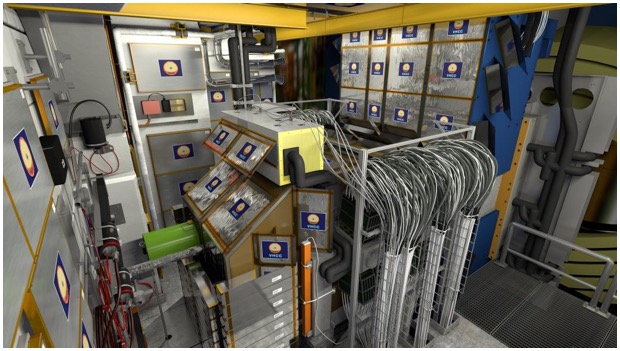The UK’s GridPP Collaboration has agreed to support the Monopole and Exotics Detector at the LHC (MoEDAL) with grid computing resources to aid the hunt for Paul Dirac’s hypothesised magnetic monopoles. As the Large Hadron Collider (LHC) continues its hunt for physics beyond the Standard Model of particle physics, the MoEDAL experiment will offer a window on highly-ionising, massive particles like magnetic monopoles (conveyers of isolated magnetic charge). Results from the LHC’s 8TeV were recently published in JHEP, and the simulations required for analysing the 13TeV results will be run on the UK grid.
The MoEDAL experiment in the VeLo cavern at IP8. Credit: The MoEDAL Collaboration 2016.
MoEDAL is based at Interaction Point 8, and its three major subdetector systems – the Magnetic Monopole Trappers (MMTs), Nuclear Track Detectors (NTDs), and Timepix network – are mostly located near LHCb’s VeLo detector. As such, MoEDAL uses LHCb’s software framework for its simulations, which model how magnetic monopoles would traverse the material of LHCb and interact with MoEDAL with CERN’s GEANT4 software. GridPP, which accounts for about 10% of the Worldwide LHC Computing Grid (WLCG), will support the MoEDAL VO vo.moedal.org at a number of sites around the UK – so watch this space for results soon!
Useful links
- The MoEDAL Collaboration’s homepage;
- vo.moedal.org in the EGI Operations Portal;
- The MoEDAL Collaboration, “Search for magnetic monopoles with the MoEDAL prototype trapping detector in 8 TeV proton-proton collisions at the LHC“, JHEP 2016:67 1-23 DOI: 10.1007/JHEP08(2016)067 (2016);
- A video introduction to MoEDAL and the hunt for magnetic monopoles (YouTube).
